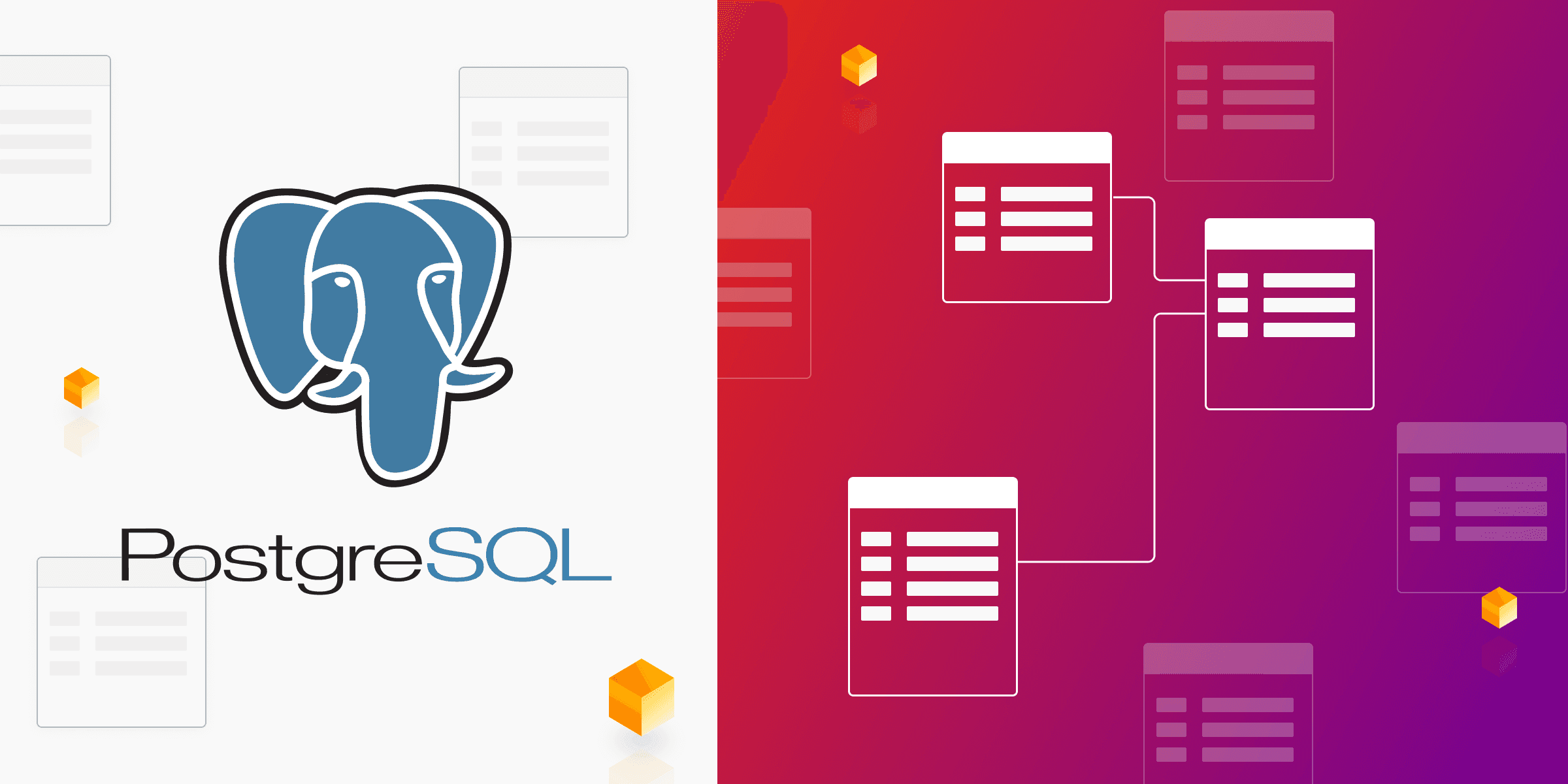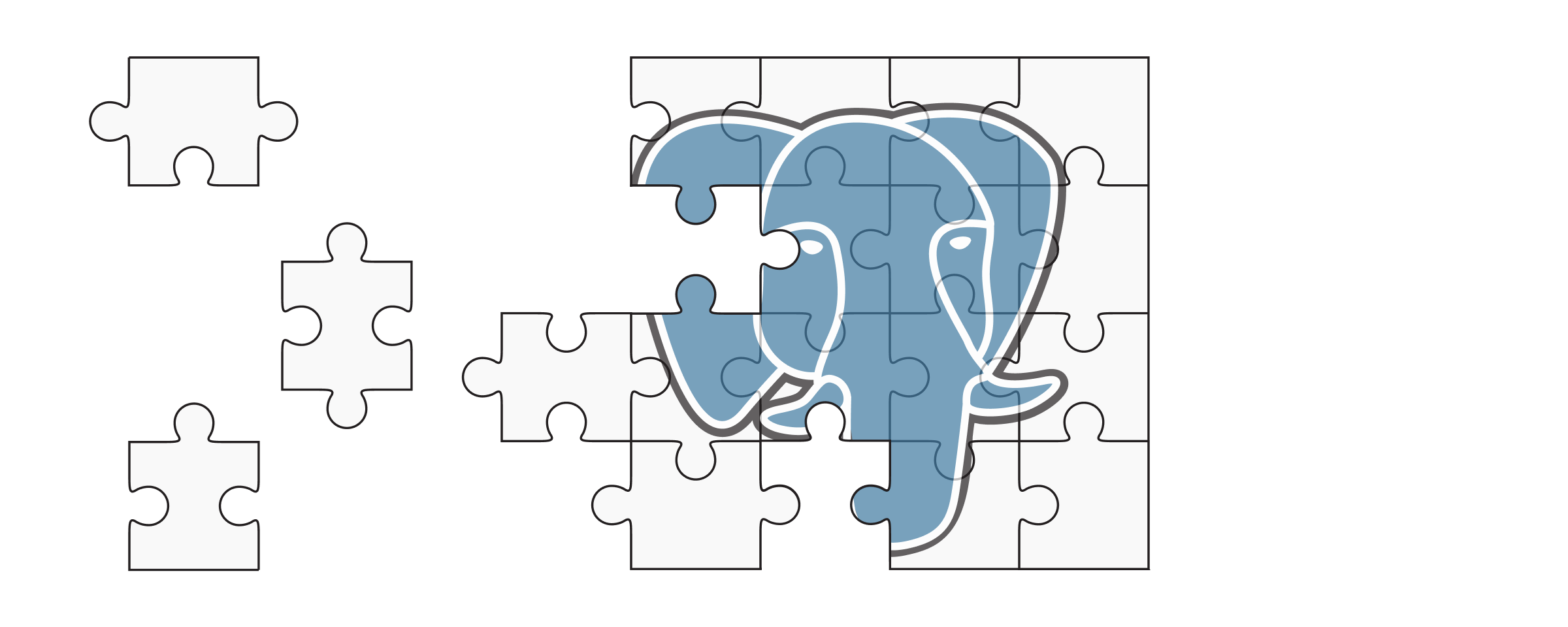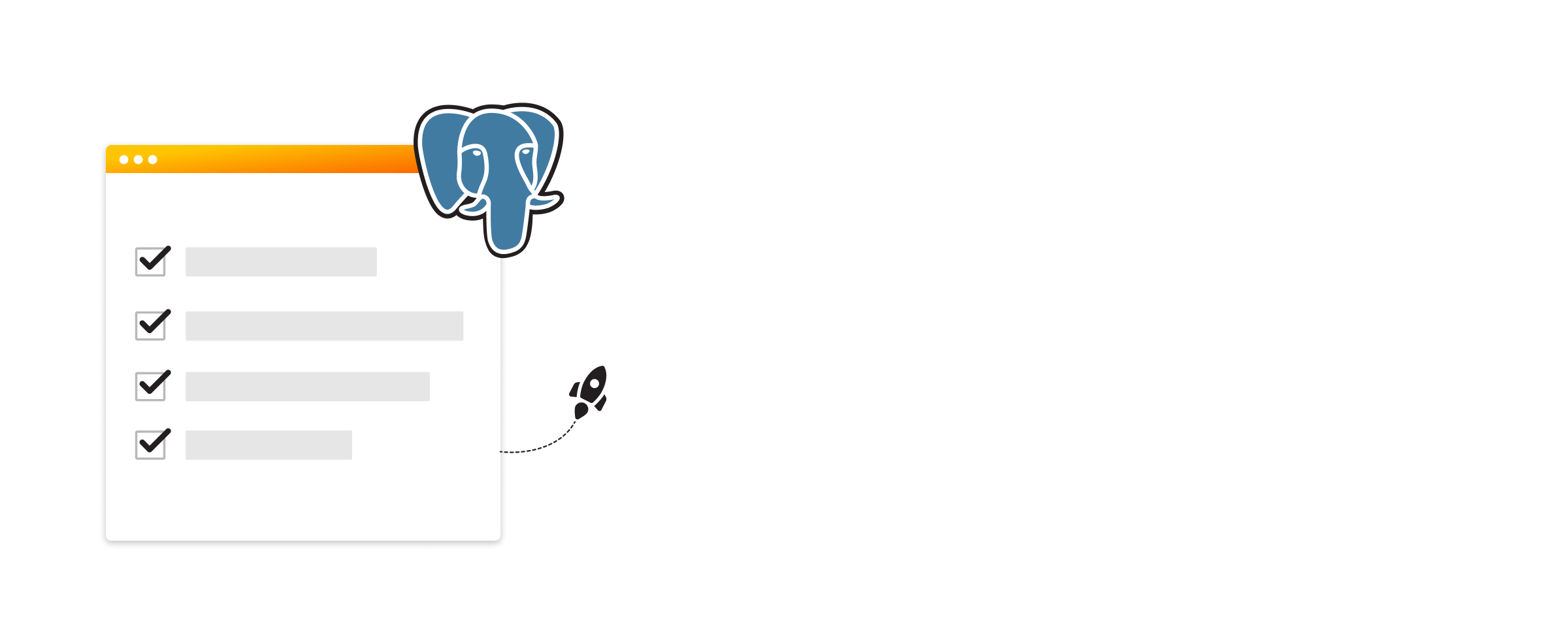
What is PostgreSQL Database?
In the constantly evolving sphere of software applications, PostgreSQL shines as an outstanding open-source relational database. The PostgreSQL project was conceived by the PostgreSQL Global Development Group, and since then, it has carved a distinctive identity among a plethora of database systems, especially relational databases.
The PostgreSQL DB, an offshoot from the older Ingres database, allows its users to create custom data types and operators, making it a versatile tool for varied database management tasks. Its feature-rich capabilities make PostgreSQL an excellent choice for dynamic websites and complex analytics applications.
Understanding PostgreSQL database server
The PostgreSQL database, developed and maintained by developers and volunteers gathered around the project and PostgreSQL Global Development Group, boasts a robust feature set. PostgreSQL is not merely a relational database but also an object-relational database, which means it provides the best of both worlds - the power of RDBMS and the flexibility of OOPs. This is useful for applications that need to handle complex data and relationships.
One of the distinctive features of PostgreSQL is its extensibility, which allows developers to define their own data types, operators, and functions. This can be immensely helpful for specialized use cases that aren't adequately covered by the built-in types and functions.
For instance, the PostGIS extension enhances PostgreSQL's capabilities to support geographic objects and can be utilized as a geospatial data store for geographic information systems and location-based services such as ride-sharing apps, real estate platforms, and logistics & delivery services. It allows these services to perform complex geospatial queries and calculations right within the database.
Moreover, PostgreSQL supports full-text search, which is a pivotal feature for applications that need to offer search capabilities over large volumes of text data, like a blogging platform, a document management system, or an e-commerce site.
In terms of data integrity, PostgreSQL's support for ACID properties (Atomicity, Consistency, Isolation, Durability) ensures that your data remains consistent and safe, which is crucial for applications like banking or finance, where data accuracy is paramount.
Another unique offering of PostgreSQL is its ability to handle a broad range of numeric and mathematical computations with its various numeric data types and a wide array of mathematical functions. This makes it suitable for scientific applications, financial applications, or any domain where complex math computations are needed.

Lastly, the support for JSON data in PostgreSQL makes it an excellent choice for applications that need a flexible schema or deal with semi-structured data. This can be useful for applications like content management systems, cataloging systems, or any application dealing with IoT data.
PostgreSQL supports multiple data types, such as:
- Character types:
- character(n) or char(n)
- character varying(n) or varchar(n)
- text
- Numeric types:
- Integer types: smallint, integer, bigint
- Decimal types: decimal or numeric
- Floating-point types: real, double precision
- Serial types: smallserial, serial, bigserial
- Monetary type:
- money
- Date/Time types:
- timestamp
- timestamp with time zone
- date
- time
- time with time zone
- interval
- Binary data type:
- bytea
- Boolean type:
- boolean
- Enumerated types:
- A data type that comprises a static, ordered set of values.
- Bit string types:
- bit(n)
- bit varying(n) or varbit(n)
- UUID type:
- uuid
- Network address types:
- inet
- cidr
- macaddr, macaddr8
- Text search types:
- tsvector, tsquery
- Geometric types:
- point, line, lseg, box, path, polygon, circle
- XML type:
- xml
- JSON types:
- json, jsonb
- Array types:
- Any valid data type can be used to create an array.
- Composite types:
- These are basically rows or records used as complex data.
Benefits of PostgreSQL
The robustness and appeal of PostgreSQL are not merely confined to its extensive feature set but extend to its core architectural advantages and advanced capabilities.
One such feature is write-ahead logging (WAL). WAL is a standard approach to handling database modifications where changes are written to a log before they are applied to the database. This method provides a persistent backup of all changes that occur within the system, enhancing the resilience of the database against crashes or hardware failures. It also allows for point-in-time recovery, meaning you can restore your database to a specific moment in the past, which is crucial for dealing with data corruption or user errors.
In addition to this, PostgreSQL provides asynchronous replication, which is an essential feature for maintaining data redundancy and achieving high availability. Replication allows the creation of one or more copies of the database, ensuring data safety in case of system failure and enabling load balancing for read-heavy applications. Asynchronous replication, in particular, means the write operation is returned as successful before the data is written to the replica database, leading to increased performance.
Another major benefit of PostgreSQL is its support for a system known as multi-version concurrency control or MVCC. Unlike lock-based concurrency control techniques, multi-version concurrency control allows multiple transactions to access the same row simultaneously without conflict. Each transaction sees a snapshot of the database at the start of the transaction, enabling it to operate without worrying about concurrent transactions. This system significantly enhances database performance by minimizing lock contention. It also provides several levels of transaction isolation, leading to more efficient database management.

Furthermore, PostgreSQL offers an extensive set of indexing techniques and index types, like B-tree, Hash, GiST, SP-GiST, GIN, and BRIN. Each is suited to particular types of queries and data structures, making PostgreSQL versatile in handling various data access patterns efficiently.
PostgreSQL also comes with full support for stored procedures and triggers, enabling the enforcement of complex business rules at the database level. Stored procedures allow for logic encapsulation and can significantly enhance performance by reducing network traffic between the application and the database. Triggers, on the other hand, allow the automatic execution of a specified function when certain events occur in the database.
In terms of security, PostgreSQL offers a comprehensive security model that includes robust access controls, views, granular permissions, and sophisticated authentication mechanisms, ensuring data privacy and integrity.
Using PostgreSQL: Getting started and beyond
For beginners, the learning curve of PostgreSQL might seem steep, mainly due to the multitude of features PostgreSQL has incorporated into the system. PostgreSQL has a vibrant and supportive community that provides continual enhancements, regular updates, and prompt security patches, ensuring its technology stays up-to-date and secure. This also means that users can expect a wealth of resources, tutorials, and experts to turn to when they need help.
Language support in PostgreSQL extends to a variety of programming languages, enabling its use in diverse environments. It even supports international character sets and multi-byte character encodings, reflecting its global user base.
Moreover, PostgreSQL's extensions ecosystem is impressive. Users can extend PostgreSQL's functionality, adding flexibility and power to its core capabilities. Stored procedures and foreign keys are two such features that improve the database's usability in the real world.
Three signs a relational database is not the right for you
Despite the numerous benefits of PostgreSQL and other relational databases, certain scenarios or application requirements might make a relational database less than optimal. Here are three signs indicating that a relational database might not be the best choice for your application:
- Complex, hierarchical, or multidimensional data: Relational databases excel at managing structured data that can be neatly organized into tables. However, if your application deals with complex, hierarchical, or multidimensional data, a relational database might prove inefficient. For instance, if you're working with interconnected data like social network connections or complex hierarchies that are more effectively represented as graphs, a graph database like Memgraph could be a better fit. Similarly, if your data model involves complex multidimensional queries like in some analytical or data warehousing scenarios, a multidimensional database or an OLAP cube might be more suitable.
- Real-time data processing: If your application requires real-time or near-real-time data processing and analysis – as is common in applications dealing with streaming data, IoT sensor data, or in some machine learning scenarios – a relational database might struggle to keep up. These scenarios require databases that can handle high-speed data ingestion and provide real-time analysis. Technologies like stream processing systems (e.g., Apache Kafka or Apache Flink) or time-series databases ( InfluxDB) are specially designed for these use cases.
- Need for horizontal scaling in a distributed environment: Relational databases traditionally scale vertically by adding more resources (CPU, RAM) to a single server, which can quickly become expensive and has physical limits. If your application requires a database that can efficiently scale horizontally – i.e., distribute data and load across multiple servers – a relational database might not be the best choice. For these scenarios, NoSQL databases like Cassandra or MongoDB, which are designed with horizontal scaling and distribution in mind, might be more suitable. They allow for the addition of more servers in the network to handle larger data loads, providing high availability and fault tolerance.
Remember, the choice of a database should align with the specific needs and characteristics of your application, and there is no one-size-fits-all solution. It's essential to understand your application's requirements thoroughly and evaluate different database technologies before making a decision.
Why and when to migrate your relational database to Memgraph
While PostgreSQL and other relational databases offer a wide range of capabilities, there are certain scenarios where these traditional databases may not fully meet the specific needs of an application. In such situations, an in-memory graph database like Memgraph may provide significant advantages. Here are a few circumstances where considering a transition might be beneficial:
- Data is better represented as a graph: If your application handles data that is more naturally represented as a network of interconnected entities rather than isolated records in tables, a graph database like Memgraph might be a more suitable choice. Graph databases excel at managing complex relationships between entities and can more naturally represent many real-world scenarios. Examples might include social networks (where relationships between users are crucial), recommendation systems (where the relations between users and items are key), or logistics and supply chain management systems (where the connections between locations matter).
- Real-time insights from highly interconnected data: Applications that need to uncover real-time insights from highly interconnected data could benefit greatly from Memgraph. In contrast to relational databases, which might require complex and performance-intensive joins to traverse relationships, graph databases like Memgraph are designed to efficiently navigate connections between entities. This allows them to perform complex queries and analytics on connected data in real time, which is beneficial in use cases like fraud detection, real-time recommendations, or network analysis in telecommunication.
- Processing large volumes of interconnected data: If you know your application needs to handle and process vast volumes of interconnected data, Memgraph can offer superior performance. Because Memgraph is an in-memory database, it can provide faster access times and higher performance compared to disk-based systems, especially for workloads that involve intensive graph traversals. Moreover, Memgraph’s sophisticated memory management ensures that even larger datasets that do not fit entirely in memory can be handled efficiently.
- Complex graph algorithms: Finally, if your application needs to implement complex graph algorithms like shortest path, centrality measures, community detection, etc., migrating to Memgraph can simplify your task. Memgraph provides out-of-the-box support for many common graph algorithms, eliminating the need to implement these complex operations from scratch.
Takeaways
PostgreSQL is a powerful open-source relational database that offers a vast array of capabilities. The ongoing active development by the PostgreSQL Global Development Group and open-source community, combined with its advanced features and strong PostgreSQL community support, make it a worthy choice for anyone in the field of software development. However, understanding the specific needs of your application is crucial when choosing the right database system.